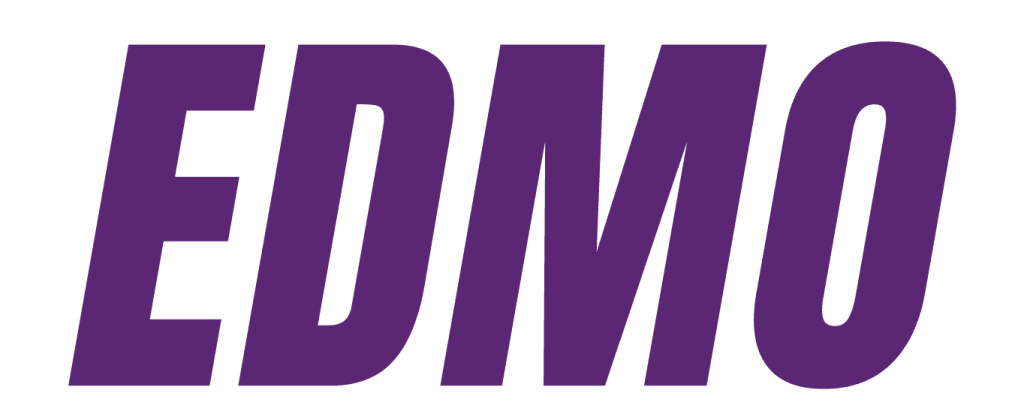The higher learning industry is more competitive than ever, and economic variables from the early twenty-first century onward will fasten the market even more. Higher education marketing is evolving into an entirely new species. Its ever-changing shape has influenced student attitudes toward further education and how they interact with specific institutions.
Table Of Contents
With the decline in college enrollment and the rising concerns over student debt, education no longer carries the same allure for high school graduates. Universities must adapt by developing effective marketing strategies to capture the attention of prospective students.
According to the SimpsonScarborough report, the average institution spends between $429 and $623 on marketing for each enrolled student. This spending highlights the critical role marketing plays in attracting students and increasing student engagement. Today, colleges must focus on not just boosting enrollment but also on building a strong, engaging, and trustworthy brand. Higher education marketing has become essential in establishing a compelling institutional presence.
Challenges faced by colleges and universities
1. Slow tech adoption and fast tech age
Higher education institutions have a massive ecosystem of support and facilities that must be continuously maintained and available to students. Often, this results in various school departments adopting or abandoning technology on an ad hoc basis, which rapidly leads to vaults full of mysterious servers, duplicate tools that achieve the same work, and an inadequate history of coding languages necessary to keep the entire stack functioning.
Consider the difficulty this provides for a marketing team looking to use automation or full-funnel analytical solutions. To say the least, it isn’t very comforting. Furthermore, as institutions strive to implement effective technological upgrades, student application activity is considered, which is changing quickly.
Three techniques might assist marketers in overcoming technological barriers and supporting their student audiences at their own pace –
- Begin with something modest and specific: If every technical request the team receives includes large-scale integration or platform adoption with several features, then the institution is promoting a lengthy process. They should work to identify and prioritize a specific tactical opportunity at a time and then stage their deployments from there.
- To know, emphasize technology: Stealth applicants, inquisitive visitors, and devoted information requestors provide the organization with a broad spectrum of personal data, from imprecise to specific. Institutions should first focus on what they don’t know about their audience and how they can learn more about them—often, this begins with sophisticated web analytics.
- Improve communication with technology partners: Unless they work in a unique higher ed marketing team with in-house developers and administrators, they’ll probably be vying for IT assets with other teams in your institution. Building strong and regular communication with these teams will assist expose techniques for phasing implementation projects and safeguard their work’s priorities during crucial moments.
2. Declining engagement with social media
Institutions often find it hard to keep up with social media trends and best practices to encourage enrollment. Here are a few suggestions to rev up your social media approach –
- Distribute motivating content: More than ever, people are looking for inspiring material. They are concerned, agitated, and seeking stuff that will make them feel good.
- Include fresh opinions: For instance, the institution’s Twitter account should be more than simply Dean posting his ideas. It could include more perspectives, such as those from the admission office, alumni, current students, etc. Consider creating “takeover” campaigns in which a freshman takes up your social media platform each week and provides their views.
3. Poor follow-through for student recruitment
Perhaps the university’s “sales funnel” is attracting a lot of attention at the top, but it’s not producing the desired results. One potential issue is that their process has too much friction. This necessitates analytics to determine where their conversion funnel is “leaking.” Here are some possible beginning places for their investigation-
- Website’s user experience (UX): Students struggle to discover what they need due to confusing navigation options and imprecise call-to-actions. They must instead sift through pages to find enrollment documents or contact information. Universities should consider UX testing to see how approachable their website is. The website should make it as simple as possible for prospective students to apply.
- Following up on inquiries: Do students receive a timely response when making digital inquiries using internet forms or sending emails to admissions? If not, universities might consider investing in marketing automation tools or hiring a virtual assistant. These tools will assist them in responding fast to incoming inquiries and demonstrating to potential students that they are interested in them.
- Targeting the audience: An audit may suggest that city A is more interested in campus than city B or that one demographic is more curious than another. If this is the case, universities may re-target their advertising efforts to reach the people likely to convert.
Five emerging marketing trends in the higher ed industry
When it comes to school marketing techniques, things change swiftly. Educational advertisers must work hard to stay on top with a youthful, technologically savvy clientele and the constant appearance of new technology and trends. These five strategies will assist in tightening up and moving forward with their marketing plan.
1. Think mobile-first
With 86% of higher education marketers using PPC as a key part of their digital strategy, it’s clear that targeted advertising is essential for student engagement. Today’s college students are mobile-first, with smartphones as their primary devices for various activities.
Mobile-first advertising should be a priority for educational institutions in their enrollment marketing strategy. Universities should create simple, mobile-friendly content and focus on platforms that students use most, such as Snapchat, YouTube, Instagram, and Spotify, to effectively connect with prospective students.
2. Choose the right social media platforms
In today’s digital world, choosing the right platforms for marketing is crucial. With 74% of people using YouTube and over 70 billion daily views for short videos, universities are tapping into its potential. The University of Michigan repurposes existing content into short-form videos, making it easily consumable on the go. YouTube marketing is vital, especially with 96% of Gen Z owning YouTube accounts. Universities like the University of Houston are effectively using YouTube, engaging audiences with live-streamed events and department showcases.
Gen Z, aged 13 to 21, favors platforms like Instagram, YouTube, and Snapchat. Universities should focus their efforts on these platforms, integrating creative and innovative strategies, such as student and faculty highlights, campus photos, event updates, and personalized hashtags for improved engagement.
3. Build a consistent university brand
A brand is more than a logo and a color scheme. It is the impression a brand leaves with each interaction. “Your brand is what people say about you when you’re not in the room,” said Amazon CEO Jeff Bezos.
Universities should maintain control over how they’re seen, then is what brand consistency entails. It should be a top priority in today’s digital world when the number of channels and touchpoints is constantly increasing.
Uniformity is vital for creating a known and trustworthy brand. Universities should consider message and tone of voice in addition to aesthetic considerations. What emotions does their content elicit? How would they characterize the personality of their brand?
Institutions should also use a brand templating platform. Users may access and change branded templates in a single location, and their marketing team will have far more control over locking down brand features before sharing access.
4. Answer key questions
Using the institution’s website, blogs, and emails to respond to critical inquiries from potential students is a strategy that should be included in every enrollment marketing plan. According to mStoner research, contrary to what education experts assume, most teen college prospects (64 percent) prefer to absorb college website information via text and articles.
Instead of addressing the most apparent queries, institutions must look outside the box and delve further into discovering what their prospects are thinking. What information do people want when they visit their website? What are they searching for on Google? What are they inquiring of their peers? Long-tail keywords in the form of particular out-of-the-box inquiries will assist you in improving your search ranks. Instead of “student accommodation Chicago,” try “what’s it like to live in Chicago as a student” or “where is the finest location for students in Chicago.”
5. Centralize marketing strategies across all departments
With departments dispersed around campus, it might be challenging to determine what marketing methods are being used and whether they are effective. A unified marketing department will allow the institutions to track expenditures, campaigns, and outcomes.
A centralized strategy will allow them to align KPIs, standardize their marketing, and, as a result, standardize their brand. Regular syncs with each department will keep all stakeholders up to date on their school’s primary marketing goals.
Conclusion
The marketing world is continuously evolving, so higher education institutions must keep on top of things or risk losing out on new students. With enrollment numbers down and increasing demand for students to interact and participate with colleges, it’s clear to understand why marketing strategies will gain popularity. These strategies enable students to form more profound, lasting ties with institutions and gain a complete image of campus life before enrolling.









No comments yet. Be the first to comment!
Leave a Comment